If you’ve set a goal to start selling your soaps at craft fairs, farmer’s markets or online this year, this labeling information is valuable. Knowing how to label your items for sale is not only part of selling best practices, it’s also required by law! Marie Gale, a blogger friend and cosmetic labeling guru, has condensed information from the FDA website to fully explain how to list soapy botanical ingredient on your product labels. If you read nothing else, this is the crux of this guest blog post: “It’s very clear that the FDA, in accordance with the Fair Packaging and Labeling Act, wants the common name as the primary name used for botanical ingredients in the ingredient declaration.”
If you’d like to learn more about cosmetic labeling or good manufacturing practices in general, Bramble Berry carries two books by Marie Gale: the Soap And Cosmetic Labeling Book and Good Manufacturing Practices for Soap & Cosmetic Handcrafters. — A.M.
There has been considerable discussion over the years on how botanicals should be listed in the ingredient declaration for cosmetics. Based on information on the FDA website, it is now clear that common names are required, and when used as a secondary listing, Latin names are accepted.
Although the “INCI name” (which usually means the Latin name) is commonly thought to be required, it isn’t – it’s optional.
Important Note: This information applies to soap and cosmetic regulations in the United States. Most other countries require that the Latin name for botanicals is used in the ingredient declaration.
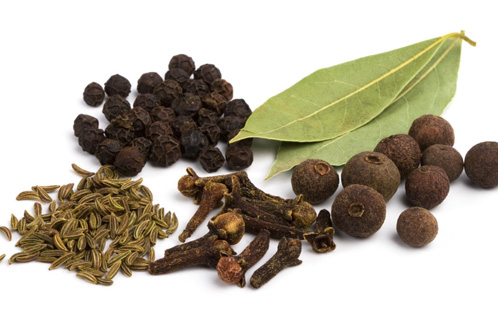
Actual Law and Regulation
The actual law and regulation governing the way ingredients should be identified in cosmetic ingredient declarations comes from several sources.
Fair Packaging and Labeling Act
The Fair Packaging and Labeling Act was enacted in 1967. It sets specific requirements for the labeling of consumer commodities (that is, products that are used by consumers and generally used up over time). The FPLA directs the Federal Trade Commission and the Food and Drug Administration to issue regulations to implement the requirements outlined in the FPLA. The FDA is responsible for the regulations applying to foods, drugs and cosmetics.
The FPLA specifies that when the ingredients must be listed, the common or usual name is used.
Code of Federal Regulations
Chapter 21 of the Code of Federal Regulations deals with food, drugs and cosmetics. Chapter 21, Part 701.3, specifies that “The label on each package of a cosmetic shall bear a declaration of the name of each ingredient…” and later clarifies how the ingredient should be identified (note: to read the full text, enter 701.3 in the first blank box and click ‘search’).
For botanicals, the name should be either as identified in the CTFA Cosmetic Ingredient Dictionary, Second Ed (1977) – which listed botanicals by their common English name – or if not listed there, the name generally recognized by consumers. Either way, the correct wording is the common name, which complies with the FPLA requirements.
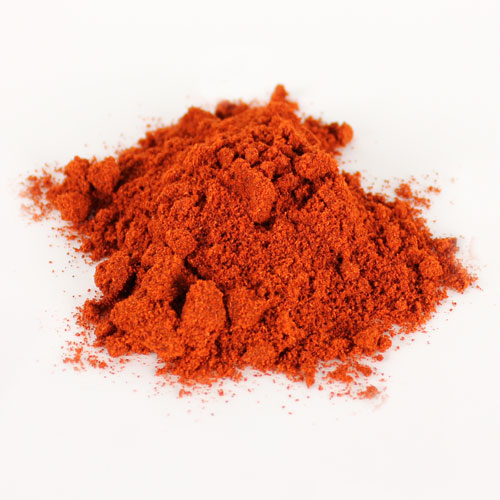
How Did the Latin Name Get Included?
In 1995, the CTFA (now Personal Care Products Council) published in 6th edition of the Cosmetic Ingredient Dictionary, which used the Latin genus and species names of botanicals in parenthesis along with the common name (i.e. Peppermint (Mentha peperita) Oil).
Then, in the 8th edition, published several years later, PCPC again changed the way botanicals were identified. In that edition, botanicals were named first by the Latin genus and species and then with the common name in parenthesis (i.e. Mentha peperita (Peppermint) Oil.
The goal, I think, was to standardize and harmonize the ingredient naming standards between the US and other countries, which were going toward requiring the Latin names for ingredients.
Most people, including myself, figured that the PCPC and the FDA were on the same page and that, so long as the common name was included, any of the different versions were okay to use.

Have the Regulations Changed?
It appears that when it comes to using the Latin name for botanicals in ingredient listings, the FDA and PCPC aren’t on the same page after all . In the last several months, the FDA posted several documents on their website that give some insight into their position. (You can see the documents list here.)
In March 1995, the CTFA wrote the FDA in preparation of their upcoming 6th edition of the Cosmetic Ingredient Dictionary, requesting that the FDA agree not to take action against labelers using the Latin genus and species to identify botanicals. They sent a follow-up letter changing the original request, asking that dual names be allowed as part of a “transition period”.
In June, 1995, the FDA responded. The section concerning the Latin names for botanicals is quoted here [emphasis added]:
The use of Latin names as the primary identifying term for plant extract ingredients, with the current common name appearing imbedded in parenthesis, would not be consistent with the FPLA. The statute requires the use of the common or usual name, and there is no way that such a requirement can be considered to be met by the placement of the recognized common or usual name in parentheses after the Latin name. Nor is the agency willing to accept the Latin name as the common or usual name of such ingredients.
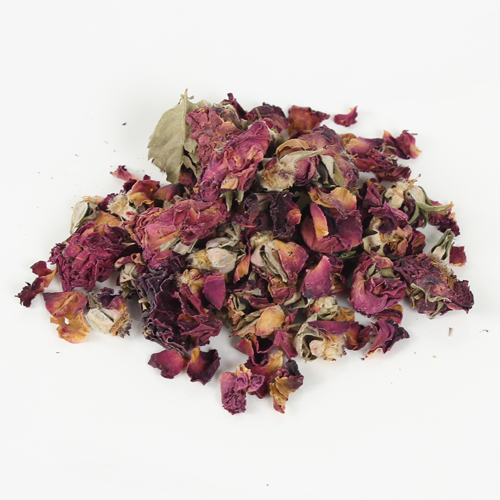
Later in the document, the FDA went on to say:
“If the CTFA petitions the agency to amend the cosmetic ingredient labeling regulations to specifically provide for the declaration of plant extracts by their common or usual name followed in parenthesis by their Linne INCI name in the ingredient statement, we would be unlikely to object during consideration of the petition to products intended for sale and distribution in the United States that bear such a dual declaration in the ingredient statement.”
Following that exchange, in 1996, the CTFA filed an official Citizen Petition to the FDA to have the regulations changed to have the 6th edition recognized as the official source of ingredient names, including that the Latin genus and species be required in parenthesis when identifying botanical ingredients.
The FDA’s response, in July, 1997, said:
“The purpose of this letter is to advise you, in accordance with 21 CFR 10.30 (e), that we have not been able to reach a decision on your petition within the first 180 days of the filing of the petition, because of the limited availability of resources and other agency priorities.
Please be assured that your Petition is under active review at the present time, and a more substantial response reflecting the agency’s determination of the merits of the several elements of the Petition will be forthcoming as soon as possible.”
No further documents seem to be available on the FDA website concerning the status of the matter.
Note that PCPC continued to issue new editions of the Cosmetic Ingredient Dictionary, and as of the 8th edition, changed the nomenclature for botanicals to the Latin name with the common name in parenthesis – although that is clearly contrary to the FPLA.

What Does the FDA Want and Expect?
It’s very clear that the FDA, in accordance with the Fair Packaging and Labeling Act, wants the common name as the primary name used for botanical ingredients in the ingredient declaration.
That they “wouldn’t object” to having the Latin name as a secondary name (in parenthesis) is confirmed in a 2011 video on cosmetic labeling in which it is stated that the Latin name may be used that way, but they common name should be used first. (The quote is at about 12:16 into the video.)
So, bottom line, the FDA wants and expects the common name for any botanical ingredients. If you want to include the Latin genus and species, you can do so – but only if it is in parenthesis embedded inside the common name.
Doesn’t that make labeling a little easier?
This post originally appeared on Marie’s blog on May 25, 2013.

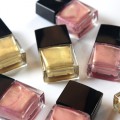
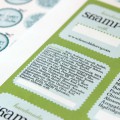
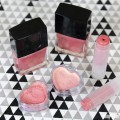
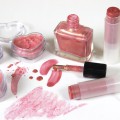
I’m new to soap making and labeling. But I have a question: “When labeling soaps that include exfoliates (like oatmeal, cranberry seeds, bamboo extract or jojoba beads) do these need to be in English (common name)only or where do we fine the technical name for these? Any help will be appreciated. Thank you.
Hi Diana!
You need to include the English name, but the INCI name is optional. So you can include it if you like. 🙂
-Kelsey with Bramble Berry
I have a question on labeling. If you use the melt and pour what do you put on the label? Do you list everything from the melt and pour label and then list what you put in.
Hi Jenna!
When labeling your melt and pour, you’ll want to include all the ingredients used. You can find those ingredients in the description of each melt and pour soap. 🙂
I’ll include a link about labeling soap. While it is about cold process, there are some great tips in there, including the fact that you list ingredients from most used to least used. I’ll also include a link about selling your soap you may find helpful.
-Kelsey with Bramble Berry
How to Label Cold Process Soap: http://www.soapqueen.com/bath-and-body-tutorials/cold-process-soap/how-to-label-cold-process-soap/
So You Want to Sell Your Soap (Part One): http://www.soapqueen.com/business/so-you-want-to-sell-your-soap-part-one/
Thank you:)
You’re welcome!
-Kelsey with Bramble Berry
I am woning, how to list Vit.E? I have red that we must use tocopherol, rather than the common name. Because vit.E would indicate a health benefit?
Thank you for writing this post, it does help clear things up a bit.
Hi Angela!
You can actually list either! You can also list Vitamin E (tocopherol) to cover all the bases. 🙂
-Kelsey with Bramble Berry
Hi,
Great article as always. For ingredients like green tea extract, evening primrose extraxt or carrot seed what would you write on the label?
Thanks,
Laura
Hi Laura,
You can use the common name for these extracts. So, you could simply list the ingredient as ‘Carrot Seed Extract.’ If you want, you can also include the Latin name/ingredients in parentheses. It would look like, ‘Carrot Seed Extract (Caprylic/Capric Triglyceride, Daucus Carota Sativa root Extract)’.
I hope that helps!
This is an interesting post. One I have been telling others for awhile not…. That common names are acceptable and INCI names are optional.
However I think the common name often tells the consumer more information about the exact ingredient used. For example if you used the INCI name of shea butter you wouldn’t know exactly what was used. It could be refined, unrefined or the liquid oil. The same goes for a few other ingredients, salt I think was one of them off the top of my head without looking it up…………
But from a business stand point there are so many people jumping on the bandwagon about wanting only natural ingredients. And many of the INCI names sound very “chemical” like when they are anything but and are very natural.
So I am glad to see this post to encourage more people to use the natural and common name for the ingredients they use.
Hi Chris!
I’m so glad you found this post valuable. I agree, the common and natural names for ingredients give lots of information! Thanks for your feedback Chris 🙂
-Amanda with Bramble Berry
Hello Everyone!
I have EVERYTHING labeled Latin first, Common in parentheses. Do I have to change it, or can I leave it alone? .
Thanks and Happy New Year!
~Michele
Hi Michele!
Labeling everything thoroughly is a great idea! The statute requires the use of the common or usual name, and there is no way that such a requirement can be considered to be met by the placement of the recognized common or usual name in parentheses after the Latin name. Just to be safe, I would consider changing your labeling to list the common name first, with the Latin name in parenthesis if you still want to include it.
I hope this helps!
-Amanda with Bramble Berry
I’ve noticed a sneaky little thing they do here in Bali: they provide the common names for “good” oils like olive oil, but they provide only the botanical name for palm oil because it has such a negative reputation!
Hi Savony!
Oooh, that is sneaky! I always prefer company’s being upfront about their ingredients.
-Amanda with Bramble Berry
Thank you for a great informational piece that has confirmed how I interpreted the labeling regulation of botanicals as listed by the FDA. Of course we want to be careful and professional in all aspects of our trade. I had initially understood the Latin to be the correct format, but after a close reading of the regulations I realized that wasn’t needed, so I have been using the common botanical names. New to me in this article was the use of Latin names in Europe on their labels. It isn’t a big stretch to see that our country’s labeling system may change to resemble that of Europe’s in the future. I’m thinking I should now use the dual system now with the Latin in parenthesis to be in the habit.
-Thank you Marie for the great information.
-Anne Marie, I appreciate your diligence to the continued education of bath and body products makers. These articles have been a great resource. Keep up the great work!
Annie
So glad you enjoyed this post, Annie! And yes, it never hurts to be even more clear and include the parenthetical Latin names of ingredients. If anything, it’s something potential international customers would appreciate! Happy soaping 🙂
-Kirsten
my question is how do you label to colorant that you use?
Hi Olivia,
Colorants work differently! For colorants, we use the INCI name because the trade names (what we rename the product) doesn’t tell consumers much. It’s all in the interested of transparency!
For example, if I were to list Fired Up Fuchsia Colorant as an ingredient in my soap, I’d list it as Polyester-3, Red 28 & Orange 5. That’s because Fired Up Fuchsia Colorant is a Bramble Berry specific name, and doesn’t mean to someone unfamiliar with the company.
With all of our colorants, you can find the INCI information on the product’s page 🙂
-Kirsten
I purchased some soap awhile back and there were not labels of ingredients at all. What can happen of they do not label their products??
Soap is not considered a cosmetic by the FDA so has no requirements to be labeled IF it’s true soap (not a synthetic detergent bar) and IF there are no cosmetic claims (moisturizing or deodorant). But if it’s a syndet bar or makes a cosmetic claim, then it would have to follow the cosmetic labeling rules.
That’s my understanding from this FDA page that talks about soap:
http://www.fda.gov/cosmetics/productandingredientsafety/ProductInformation/ucm115449.htm
I purchased some soap awhile back and there were not labels of ingredients at all. What can happen of they do not label their products??
Hi SR!
Great question! As it turns out, labeling soap isn’t technically required. The Consumer Product Safety Commission, NOT the FDA, is the organization that regulates soap labeling. The following is taken directly from the FDA website:
“”True” soaps are regulated by the Consumer Product Safety Commission, not FDA, and do not require ingredient labeling.”
You can read the full text on this here:
Soap — What It Is and How It Is Regulated: http://www.fda.gov/…/ProductInformation/ucm115449.htm
Therefore, the truth is nothing can really happen. However, most consumers prefer to know what is in their soap and so labeling the ingredients correctly is a good manufacturing practice. Plus it’s a smart business move: if your consumers feel they can trust you and that you’re being transparent and honest about what you’re selling, they’re more likely to buy from you!
-Amanda with Bramble Berry
These guidelines are so weird and unscientific. I can understand saying that you must include a common name, but it makes no sense at all to say that anyone should put just a common name. Too many ingredients with different scientific names have the same common name, and too many things have multiple common names. It’s strange that the FDA would be the ones advocating this.
Does anyone know what these guidelines would mean for botanicals without a common name, or that are most often referred to using their latin name as a common name?
Hi Sarah,
I agree, it’s so confusing! Technically the FDA does govern the labeling regulations of soap and detergents. However, they do not require that the ingredients of “true” soap (made with oils and sodium hydroxide) be listed, and in fact that entire soapy industry is actually regulated by the Consumer Product Safety Commission. They are the ones who do not require labeling.
As for botanicals without common names, or those referred to by their Latin name, as long as they can be recognized by the common consumer that name may be used. Taken directly from the FDA website,
“The declaration of ingredients shall appear with such prominence and conspicuousness as to render it likely to be read and understood by ordinary individuals under normal conditions of purchase.”
So, in that case, the common name IS the Latin name! I hope that makes sense, we’ll be updating this post as we hear more information from Marie 🙂
Code of Federal Regulations Title 21: http://www.accessdata.fda.gov/scripts/cdrh/cfdocs/cfcfr/CFRSearch.cfm
-Kirsten
H – chicken fat is called poultry fat.
It says in the code you can use the common name accepted by consumers. So why bother with anything complicated at all? head desk.
Hi Melissa!
Thanks for your feedback :)!
You’re right, labeling can be a tricky subject! I would recommend sticking with the common names, and if you don’t want to include the Latin names, don’t. They are optional 🙂
-Amanda with Bramble Berry
I make some of my soaps using rendered animal fat. I know pig fat is lard and beef fat is tallow but I cannot find what to call chicken fat. Soap-calc.net has sap values for all these types of fats for soapmaking. Is any animal fat not from pork called tallow? Or is there a special name for chicken fat? Curious.
Good afternoon!
If you are making soap using chicken fat, Melissa below is correct, you can simply use the name poultry fat 🙂
-Amanda with Bramble Berry
So confusing. Latin names for oils and plain names for botanicals?
So if I have lavender infused olive oil in a lotion, would the ingredients names read like
Lavender (lavender bulgarius) infused Olea Europa (olive) oil.
Makes zero sense. I honestly just can’t see the point in regulating labels. Plain names are easiest to read.
I can see how for soap they might require specifically to list sodium hydroxide and perhaps regulate to make soapmakers make a disclaimer about how saponified olive oil and sodium olivate are the same thing, but for the rest of it, I just see it as governemnt busy money work.
Hi Melissa!
According to the information on the FDA website, Latin names are optional, but acceptable when used as a secondary listing. So instead of “Lavender (lavender bulgarius) infused Olea Europa (olive) oil,” you could simply say, “Olive Oil, Lavender.”
I hope this helps! You’re right, it’s a rather tricky subject!
-Amanda with Bramble Berry
So interesting, Marie! I love this!
But then the question must be asked, what defines a botanical? I see from the FDA documents that it pertains to color additives and extracts. Does this also include essential oils and plant material? Fruits and vegetable purees? Seeds? Carrier oils that are derived from plants? Where is the line?
Hi Kenna,
While I’m not an expert at FDA guidelines and regulations, I can give it my best shot until I get some input from Marie 🙂
I can’t find much about botanicals in the context of soapmaking, but I did find information about botanicals as drugs or supplements. You can read more about that here:
What is a Botanical Drug?: http://www.fda.gov/AboutFDA/CentersOffices/OfficeofMedicalProductsandTobacco/CDER/ucm090983.htm
No matter the substance though, my guess would be that as long as it is derived from plants (“botanicals”), the labeling would be the same. So, you’d always use the “common” name for carrier oils, essential oils, purees or seeds.
Just for added info, you can read more about the FDA’s definition of soap here:
What is soap and how is it regulated: http://www.fda.gov/cosmetics/productandingredientsafety/ProductInformation/ucm115449.htm
I do hope that helps! Again, this is not my area of expertise and I am learning along with you 🙂 We will keep updating this post with information as we hear from Marie. Thanks Kenna!
-Kirsten
Totally, the FDA regulations are confusing and hard to navigate at times. Recently, I went through and combed the regulations about mica-based colorants – some very interesting stuff there!
My question was more towards cosmetics, as the FDA does not regulate true soap in terms of ingredient labeling and the like.
I hope Marie chimes in, it would be interesting to find out if they have a definitive set of ingredients they consider botanicals or if it’s like everything else about the regulations where there is a lot of room for interpretation as to what something is defined as. 🙂